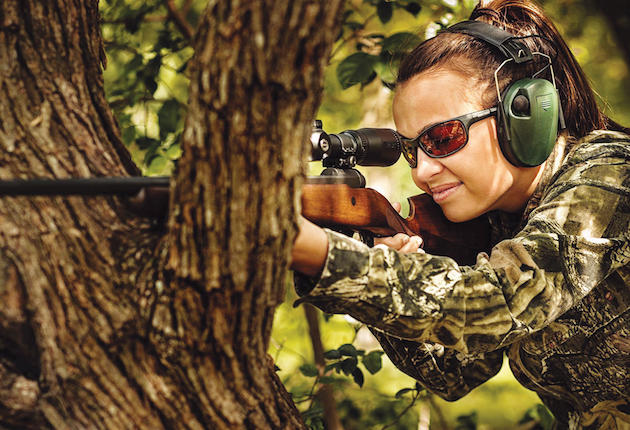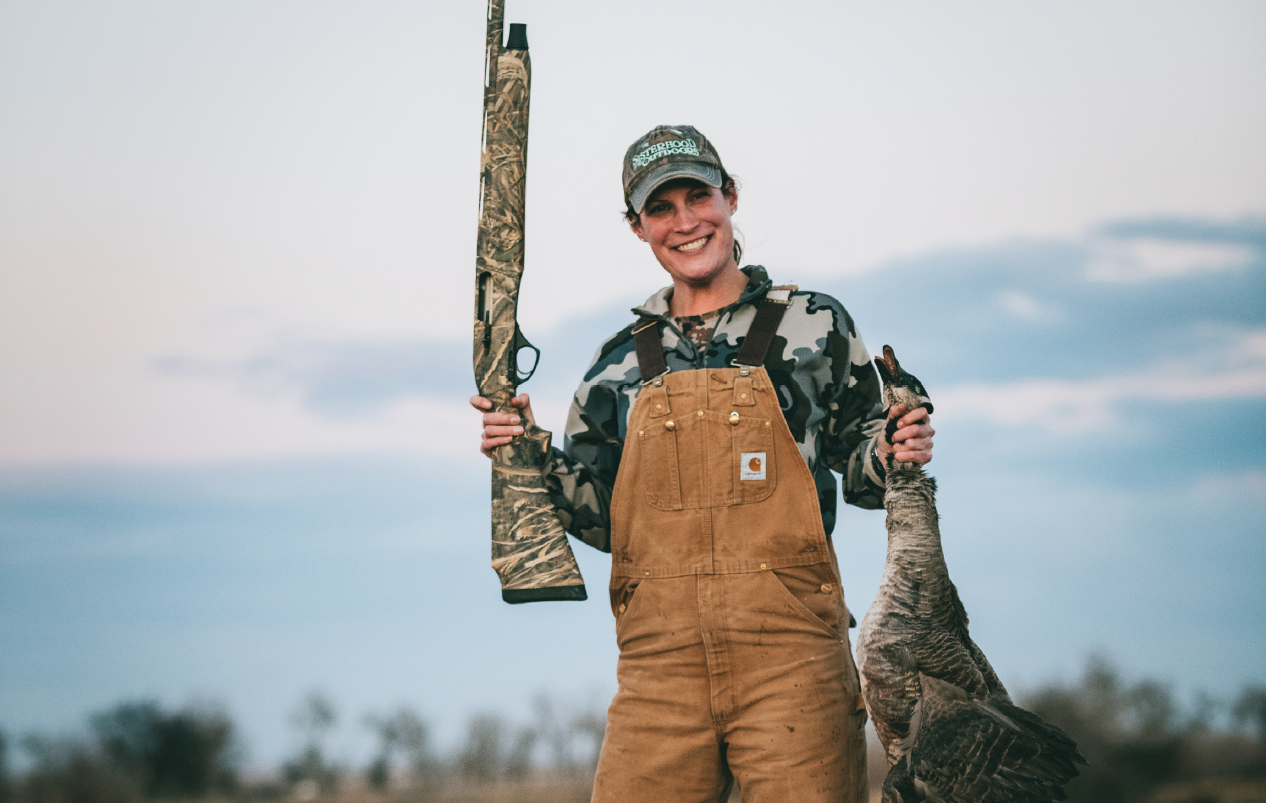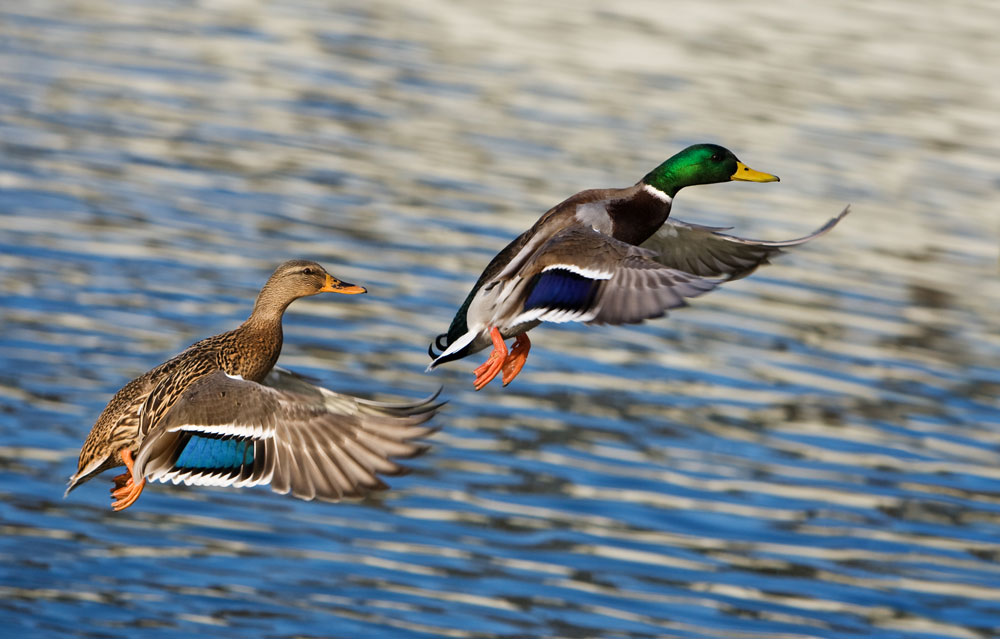This season more than one million American women will take to the field in search of dinner.
The Centers for Disease Control and Prevention reported a 24 percent increase in cancer rates in men and 21 percent increase in women between 2010 and 2020. During the same time span, they’ve seen a 15 percent increase in cancer deaths among men and eight percent in women. When it comes to diet-related cancers, meats from commercially raised livestock are leading culprits.
“I wanted to know what I was feeding my family,” says Caroline Rather, a South Carolina-based hunter and angler when asked why she took up hunting. “Wild game is hormone, steroid and antibiotic-free, the healthiest meat you can eat. And the animal has lived a humane, free-range existence. Besides that, wild game just tastes better and I love the sustainability of the field-to-table process.”
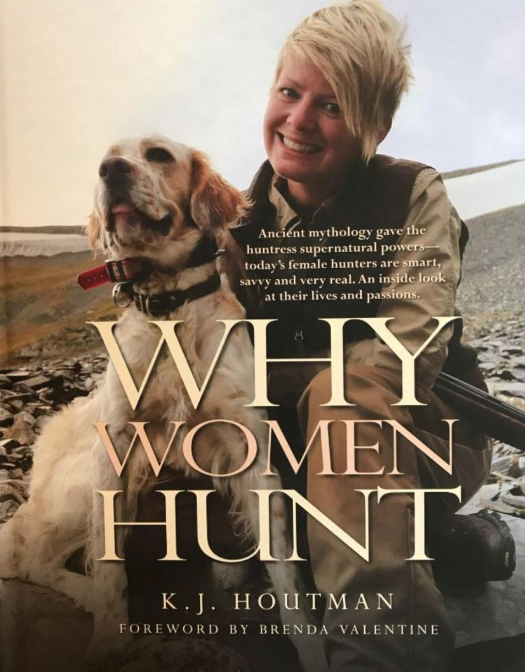
𝘞𝘩𝘺 𝘞𝘰𝘮𝘦𝘯 𝘏𝘶𝘯𝘵 chronicles the path of 18 women who have embraced the lifestyle for a wide range of reasons—available from Wild River Press. Photo by Dorsey Pictures
In her book, Why Women Hunt, author and hunter K. J. Houtman interviews 18 women who hunt to explore their motivations for this most ancient of survival rituals, from the physical to the familial. “This fall, women will feed their families locally-sourced free-range meat,” says Houtman, “that has been foraging on natural grasses, leaves, nuts and berries—clean, delicious food without a trace of chemical additives.”
According to the U.S. Food and Drug Administration, “Of 143 drugs and pesticides likely to be found in raw [domestic] meat and poultry, 42 were known to cause cancer or are suspected of causing cancer.”
“But it goes beyond food for many women,” says Houtman. “For some it’s a sense of independence that comes from possessing the skills to hunt, the ability to provide food without having to rely on others. While many grew up in hunting families where they learned to hunt from a young age, an increasing number of adult women are becoming hunters through friends who hunt and by enrolling in programs that help teach women the skills to hunt and process their wild game.”
One such program, a non-profit called Becoming An Outdoors-Woman (BOW), was founded by Dr. Christine Thomas, Dean of the University of Wisconsin-Stevens Point College of Natural Resources.
“We’ve had more than 300,000 women go through our program since it was created in 1991,” says Thomas. “Women want to hunt for many of the same reasons that men do. They enjoy the time in nature and the unexpected things that occur and the wonderful interactions that happen with wildlife. They love the fellowship of the time with family and friends and they like providing wild and healthy food that they then turn into gourmet meals. Women also appreciate the self-reliance and self-confidence that comes with going safely and successfully afield and they love to share stories after.”
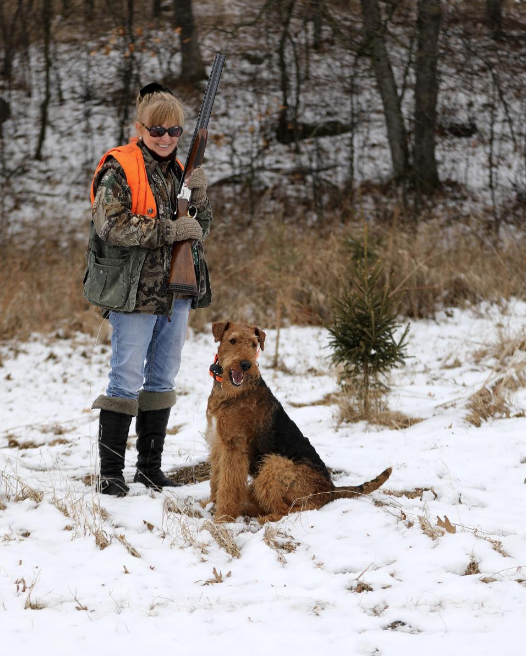
Dr. Christine Thomas of the University of Wisconsin-Stevens Point says women enjoy hunting for many of the same reasons men do. Thomas is the founder of the Becoming an Outdoors-Woman program that has helped mentor more than 300,000 women into hunting. Photo by Shannon Honl
The BOW program was created following a conference that was held in 1990 to identify barriers to women getting involved in hunting. The majority of those barriers related to a lack of knowledge about how to go about hunting. “We felt if education was the main barrier,” says Thomas, “we could handle that, so BOW was born.”
With the current migration from cities in turmoil to small town and rural America, interest in programs introducing people—especially women—to hunting is on the rise. Hunting is seen as part of the larger “locavore” movement, a trend to source food—be it hunted or grown—from one’s own area. The genesis of the movement is about abandoning the large-scale commercial farm and supermarket supply chain.
For Mary Predovich, Secretary of Safari Club International’s Sables program, an effort to get both women and men involved in hunting, it’s all about family—spending time together in the field and around the dinner table, sharing elk steaks or pheasant kebobs and swapping stories from the hunt.
“Sables is about educating people about the role of hunting as part of the wise use of our wildlife resources and conservation,” says Predovich. “For me, mentoring other women into hunting is very rewarding—from the first shooting class to actually getting afield.”
According to a report issued by National Geographic, “The proportion of women who hunt has risen 25 percent since 2006. Women are finding that hunting gives them a chance to connect more closely to the food chain and to nature,” says the report, “to eat food that is more ‘natural’ so that they understand where their meat comes from.”
From Jezebel, “A Supposedly Feminist Website,” as they bill themselves, “The adoption of hunting as a hobby by those who bear zero resemblance to the cast of Duck Dynasty continues! Women are taking up their rifles in the hopes of bringing home the venison. Now it’s food-supply-conscious, authenticity-seeking urbanites—i.e., hipsters.”
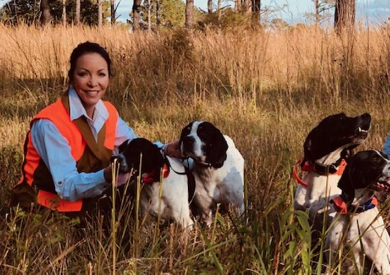
For Rather, a gourmet wild game cook, the field-to-table existence has the added appeal of spending time in nature with their favorite bird dogs. Photo courtesy of Caroline Rather.
“Women hunters were never as accepted or celebrated as they are in this decade,” writes veteran hunter Brenda Valentine in her foreword to Why Women Hunt, “the number of women in boots and camouflage has exploded.”
Whether it’s looking for a healthier way to eat, developing confidence from knowing how to provide food for your family or the opportunity to spend time with them, it’s clear women are finding plenty of reasons to participate in the autumn celebration of the hunt. From the looks of it, that trend is just warming up.
This article originally appeared in Forbes. Follow Sporting Classics TV host Chris Dorsey at Forbes.
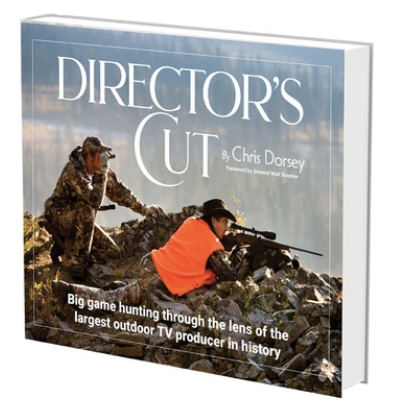 The World Of Sporting Literature Has A New Classic from one of the planet’s most widely traveled hunters. Director’s Cut…Big game hunting through the lens of the largest outdoor TV producer in history, is a book and film production more than 15 years in the making. Author and Executive Producer Chris Dorsey, along with a team of the world’s best sporting life photographers and cinematographers, embarked on expeditions to distant corners of the globe to create an indelible portrait of big game hunting.
The World Of Sporting Literature Has A New Classic from one of the planet’s most widely traveled hunters. Director’s Cut…Big game hunting through the lens of the largest outdoor TV producer in history, is a book and film production more than 15 years in the making. Author and Executive Producer Chris Dorsey, along with a team of the world’s best sporting life photographers and cinematographers, embarked on expeditions to distant corners of the globe to create an indelible portrait of big game hunting.
Dorsey has spent the past 25 years investigating and chronicling the animals, people and unforgettable places home to remarkable big game hunts while producing nearly 60 outdoor adventure television series. In the process, his teams amassed a library of more than 100,000 hours of HD footage and nearly 150,000 photographs, making Director’s Cut (the book and DVD) an unmatched celebration of the world of big game hunting. Buy Now

